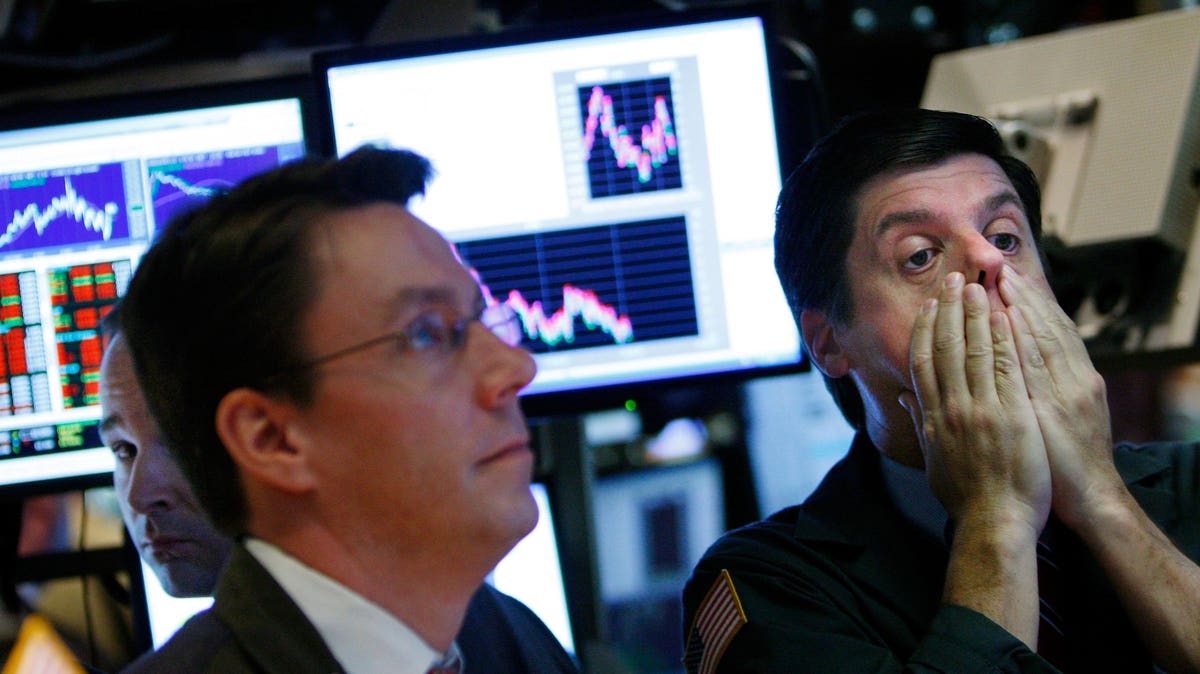Topline
The ongoing discussions about the health of equities and the U.S. economy are eerily similar to the discourse leading up to the Great Recession, JPMorgan’s chief quantitative market strategist wrote in a Wednesday note to clients, an ominous warning as the Federal Reserve, Wall Street and Main Street alike cross their fingers the economy will have a soft landing.
Key Facts
Today’s market conditions “rhyme with 2008,” according to a JPMorgan group led by Marko Kolanovic, specifically citing the rapid increase in interest rates and the relatively bullish prevailing sentiments among investors despite a laundry list of worrisome signs.
“Going into the crisis in 2007, investors were discussing the exact same topics as today: Fed pause, consumer resiliency, soft landing, strong jobs,” noted Kolanovic, reprinting a January 2007 note from his bank warning about the lingering impact of higher rates to prove his point.
The stock market and U.S. economy ultimately collapsed 15 years ago, a dire scenario most experts don’t foresee, but Kolanovic says several signs are more urgent today than they were then, such as a five-fold greater increase in the federal funds rate over the last 18 months compared to the rate hike between 2002 and 2008, a more global tightening of monetary policy and a “disproportionate” impact of higher rates on smaller businesses.
Kolanovic suggests several factors—such as consumers having more savings, and home buyers and corporate borrowers locked into loans at far lower rates available today— are causing “lags” to see the full impact of rate hikes.
The bearish Kolanovic suggested clients should shun equity and credit investments for fixed income “as long as interest rates remain in deeply restrictive territory and the overhang of geopolitical risks persists,” nodding to Russia’s ongoing war in Ukraine and other global unrest that have sent oil and other commodity prices surging.
Tangent
“Can AI change the economy and offset the negative impact of inflation and interest rates? We think no,” Kolanovic wrote. During the first half of this year, major U.S. stock indexes pared almost all of their 2022 losses associated with the rapid change in monetary policy thanks largely to a $4.1 trillion surge in market valuations of seven massive artificial intelligence-exposed technology companies like Nvidia and Apple. Kolanovic dismissed this surge as “speculative,” and recent months have been far less kind to AI trades, with the tech-heavy Nasdaq down more than 5% during the third quarter.
Surprising Fact
Kolanovic’s evocation of 2008 doesn’t mention that year’s banking meltdown, which was heavily referenced during this past spring’s string of high-profile bank failures. “This is different from 2008,” Treasury Secretary Janet Yellen, who was a high-ranking Fed official amid the Great Recession, reassured in March.
Key Background
The Dow Jones Industrial Average, S&P 500 and Nasdaq last year each registered their worst years since 2008 as the Fed moved off of its growth-first policy of near-zero rates in order to combat inflation. The federal funds rate, which determines overnight lending costs between banks but heavily influences all borrowing costs, is 5.25% to 5.5%, its highest level since 2001. At its meeting last week, the Federal Open Markets Committee voted to hold rates steady, but projected rates to sit at about 4% by the end of 2025, indicating the unfriendly borrowing environment will last for a long time.
Read the full article here













Leave a Reply